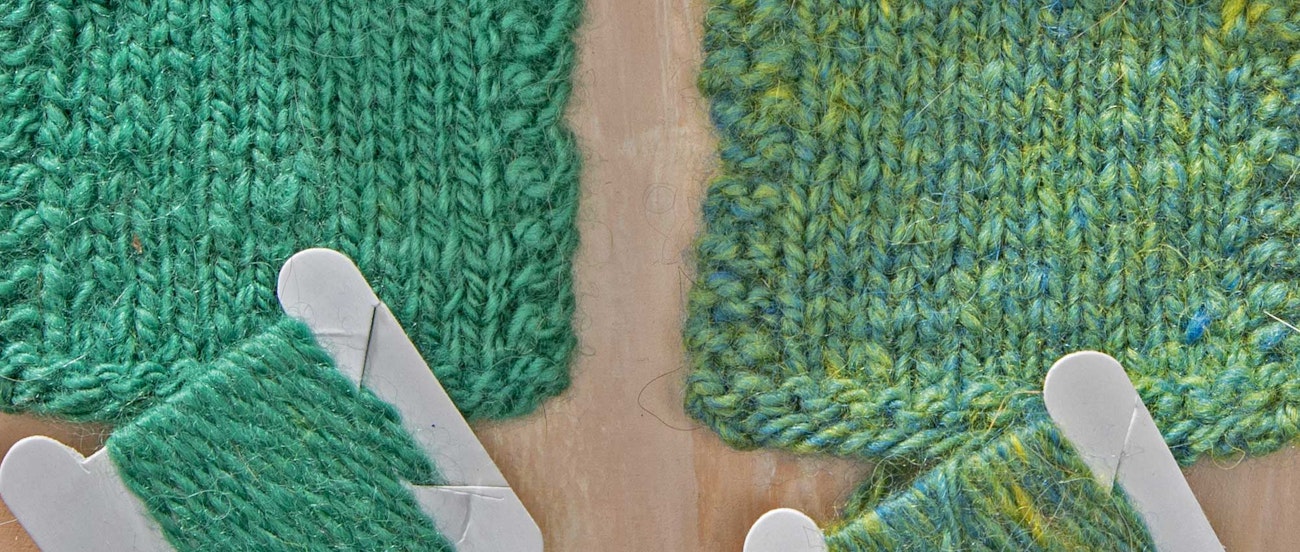Editor’s note: Alanna Wilcox is a fiber artist, author, and educator who encourages spinners to take a deep dive into color theory and experiment with blending to create complex colors in their spinning. In this All Access exclusive, Alanna walks you through three projects that explore how carding can be used to create specific color effects. Read on to learn more.
Working with color is one of my favorite aspects of spinning yarn. We can create color combinations and effects that a dyer just can’t match when applying dye to a commercially spun yarn. When it comes to color, we spinners can control both the fiber processing and yarn construction steps.
For example, we can start off with a dyed fleece and prepare it by either combing or carding it to create a specific color effect. Imagine that we start off using the colors blue and yellow and the resulting fleece has various spots of blue fiber, yellow fiber, and green fiber where the colors intermingle. The same color process could be applied to combed top, yielding completely different effects if blending is created through carding the combed top, splitting it into thinner strips to alter color sequencing, or a multitude of other techniques.
Optical Color Blending
Color perception plays an equally important role in how blending colors (or choosing not to)—and the degree to which those fibers might be carded—can really create unique yarns. The closer together individual fibers of different colors get, the more difficult it is for our eyes to discern the difference. This perception of blending is called optical color blending.
 Note how the carded green color on the right is a complex, heathered color when you look at it close up.
Note how the carded green color on the right is a complex, heathered color when you look at it close up.
You might also have observed this phenomenon when trying to spin a commercially dyed top that had several colors running parallel to one another, creating vertical color striations. When fiber like that is spun, the drafting and thinning out of the fiber makes those types of yarns appear more like a muddied solid color compared to the beautiful variations in the larger unspun preparation.
Working with color and fiber fascinated me so much that it was my focus for exploration when conducting my in-depth study while pursuing a Master Spinner certificate. The culmination of my coursework and final project can be seen in my book A New Spin On Color. As part of the coursework for the in-depth study, I created three garments after creating more than 20 different samples. I’ll share some of those samples and the garments with you here.
A Start with Samples
The first step in this endeavor was to choose colors. I selected a hand-dyed combed top that shifted from a dark blue into crimson on to a sunny yellow and ended with a spring green.

